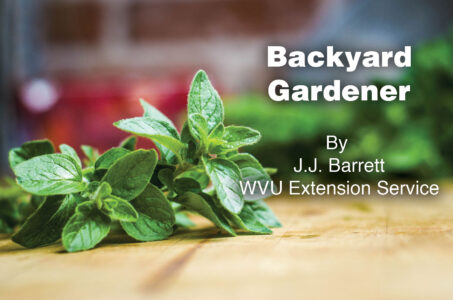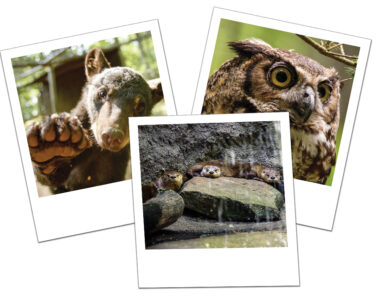Backyard Gardener: Basil – the royal herb used as a symbol of love

(Backyard Gardener - Photo Illustration - MetroCreativeConnection)
Hello Mid-Ohio Valley farmers and gardeners! Another beautiful week of weather in April is upon us. However, rain and cooler weather are in the forecast for the weekend. If you get the itch to go out and purchase some plants, my advice is be selective.
Look for healthy transplants which are short and stocky with short internodes, a thick stem, free of diseases or insects, uniform, dark green leaves, and white roots with vigorous growth, but not so much so that they wrap around the soil medium.
Plants started indoors or purchased at a greenhouse should be “hardened” or acclimated to the outdoors before being transplanted to the garden. Set the transplants in a shady, protected outdoor location about seven to 10 days before planting if this is their first time outdoors. Warm season vegetables, such as tomatoes and peppers, should not be exposed to temperatures below 55 degrees F.
In recent years herbs have become very popular to grow in the garden, containers and raised beds as we discover more culinary and medicinal uses for these fantastic plants. Basil (Ocimum basilicum) is a very popular annual herb to cultivate.
Basil was most likely first cultivated in India and has become a standard herb to flavor Italian and Thai dishes. Ancient people held this herb in high esteem, deriving the word “basil” from the Greek basilikohn, which means “royal”. In Italy the herb is used as a symbol for love (could we give bunches of basil on Valentine’s Day instead of roses?)
A relative of mint, basil is often used in tomato sauces, pesto sauce, and as a flavoring agent for oils, vinegars and teas. Any gardener who has grown this herb knows firsthand of its wonderful aromatic leaves which can be used fresh or dried. Fresh basil is splendid to use for cooking and it is really convenient to grab some right in your own backyard.
Similar to other herbs, basil requires a sunny location that receives at least six to eight hours of sunlight and thrives in well-drained soils. Having rich, loose soils is great for basil, but soils can be improved using raised beds or amendments such compost or aged manure. A pH range of 6.0-6.5 is ideal.
I would recommend planting transplants but it can be fun and rewarding to grow your own plants from seeds. This time of year you can sow seeds directly into the soil in raised beds or containers. Sow seeds evenly and very shallow, covering with 1/4 inch of soil. Keep plants moist and free of weeds. Seeds will germinate in five to 10 days.
Once seedlings have developed two to three pairs of true leaves, they should be thinned to 12 inches apart. Be sure the roots are receiving adequate moisture with a good deep watering at least once a week.
Be cautious with plants grown in containers. They will dry out faster than those in raised bed or gardens and will have to be watered more frequently. It is also highly recommended to mulch basil to conserve moisture, reduce weed growth, and keeps basil leaves clean. It is wise not to over-fertilize basil because the flavor in the foliage will be reduced during rapid plant growth.
Fertilize sparingly, using a 5-10-5 commercial fertilizer once or twice during the growing season at the rate of 3 oz. per every 10 ft. of row. If using a liquid fertilizer, apply at one half the label recommended strength every four to six weeks for indoor plants and every three to four weeks for basil grown outside in containers.
There are many great varieties of basil to choose from. Basil seeds are readily available from many mail-order companies including plants with fragrances of lemon, lime, cinnamon, licorice or anise. Traditional sweet basil is the most popular variety, used primarily for culinary purposes such as pesto and tomato dishes.
“Lemon basil” is a fine-leafed plant with distinct lemon fragrance for use in potpourri, iced teas, salads. “Genovese” is a vigorous, large leaf basil used for making pesto. “Pesto Perpetuo” is a variegated-leaf basil does not produce flower spikes. “Lettuce Leaf” basil produces large, crinkled green leaves which have a sweet flavor.
Thai basil is an upright, purple stemmed plant with a flavor and fragrance very different than other types. There are also dwarf varieties such as ‘Spicy Globe’ that make nice ornamentals for containers or edging flower beds. A few varieties are not used in cooking but have unique fragrances such as “Holy Basil” and “African Blue” basil.
The terminal growth of basil plants may be pinched out periodically to encourage branching. This will create thicker plants with more tender foliage for harvest. If not managed, basil will flower (some are actually quite attractive and used in arrangements or left as an ornamental) and form seeds.
Plants will become woody and yields will suffer. Quality will also be affected, with more bitter flavors arising. For the most flavorful foliage, flower buds should be pinched out as soon as they appear.
There are a few pests that attack basil, including aphids, slugs, and Japanese beetles. However, a major threat is root rots caused by poor drainage. This is why it is crucial to plant in a well-drained location. Contact the Extension office for control measures.
Harvest basil whenever plants are about 6-8 inches tall and four sets of true leaves can be left after cutting. If whole stems are harvested, cut just above a pair of leaves. Basil is best used fresh with its superb aroma and texture. Leaves can be preserved by hanging the foliage upside down in small bunches and air drying in a warm, dry, well ventilated room or by spreading flat on a drying rack.
Once the basil is thoroughly dried, strip the leaves from the stems and store whole or ground in an air tight container away from heat and bright light.
Freezing is another preservation method which produces a flavor more like fresh basil. You can freeze whole leaves in small quantities or chop up the leaves into small pieces and place in ice cube tray compartments topped off with a little water. Another method is mixing 1/4 cup chopped basil with 2 teaspoons vegetable or olive oil. Pour teaspoonfuls of basil mixture onto wax paper-lined baking sheets and freeze. Peel off the wax paper and store in plastic bags.
Find our more information on basil at our WVU Gardening webpage extension.wvu.edu/lawn-gardening-pests/gardening. Contact me at the Wood County WVU Extension Office (304)-424-1960 or at jj.barrett@mail.wvu.edu with questions. Good Luck and Happy Gardening!






